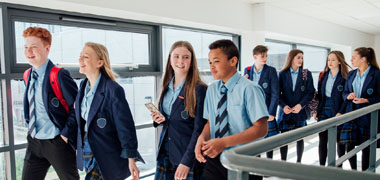Fast-track your qualification with Recognition of Prior Learning (RPL)
Written by Melinda Irvine
18th July 2019
Did you know that all VET (Vocational Education and Training) qualifications and nationally recognised training courses recognise your existing skills, work experience, and industry knowledge? It’s great knowing that what you learn today never expires. This article explains the RPL process: what it is, how it works, and how you can use it to your advantage if you are completing a course or qualification with an Australian Registered Training Organisation (RTO).
What is Recognition of Prior Learning (RPL)?
RPL is a type of assessment carried out by a Registered Training Organisation to determine if a student will receive any type of credit for previous study or work experience in the same vocation and study area.
For example: a student completing a Certificate III in Hospitality but has been working as a coffee shop barista for three years. Rather than complete the unit of competency SITHFAB005 - Prepare and serve espresso coffee, the barista may request an RPL assessment for this unit.
How does RPL benefit students?
RPL has three clear benefits for enrolled students or anyone considering a formal qualification in their industry or vocation:
- Formalising industry background and experience
In some circumstances, a student can achieve a full qualification based on their skills and experience in a related workplace.
For example: a warehouse supervisor has been working for a company for more than 20 years but (apart from forklift licences and short courses) has never undertaken any formal study. Using RPL they might be able to achieve a full TLI32416 - Certificate III in Logistics based on their industry background and skills. - Gaining entry into a qualification
Some students can qualify for entry into higher education or along a vocational learning path based on their workplace skills and knowledge.
For example: to enrol in a SIR40316 Certificate IV in Retail Management a student must already hold a Certificate III in Retail. But if a student had retail experience where they were already using the skills and knowledge described in the core units of competency from the SIR30216 Certificate III in Retail, they might gain entry into the qualification. - Reducing course completion times by recognising outcomes already achieved
Students don’t waste time repeating the same learning and can fast-track their qualification by applying existing skills and industry knowledge.
For example: a qualified diesel mechanic completed a Certificate III in Automotive Diesel Engine Technology several years ago. They now want to learn how to carry out electrical repairs on vehicles. When undertaking their AUR30316 - Certificate III in Automotive Electrical Technology they will probably receive RPL for learning already completed in the diesel engine qualification.
Who is eligible for RPL?
Anyone enrolled in a nationally recognised qualification can apply for Recognition of Prior Learning. You can gain RPL for:
- Skills and knowledge gained on the job
- Completed nationally recognised qualifications and units of competency
- Previous study with higher education institutions
REMEMBER: possessing a skill or certification does not guarantee RPL, you must still undergo an assessment process.
Undergoing the RPL process
To achieve RPL for a unit of competency (or a full qualification) students must prove to the Registered Training Organisation (RTO) they already possess the required skills and knowledge. To do this, the RPL process usually involves a combination of the following actions:
- Interviewing the student and having them undertaking an oral test. E.g. having a safety officer explain the risk assessment process.
- Observing the student in their workplace (or simulated environment) carrying out specific job tasks. E.g. watching a barista prepare an espresso coffee and apply different milk texturing processes.
- Having the student undertake written examinations and assessments. E.g. Having a bookkeeper prepare a series of journal entries and submit a trial balance.
- Considering documents and testimonials. E.g. a graphic designer submits completion documents from a non-accredited course using industry recognised software.
- Reviewing portfolio items. E.g. an interior designer submits a portfolio of completed design projects highlighting a strategic use of colour.
REMEMBER: receiving RPL for any unit of competency (including entire qualifications) requires a lot of processing time by an RTO and is not a free service. Always discuss the RPL fees before commencing the process.







